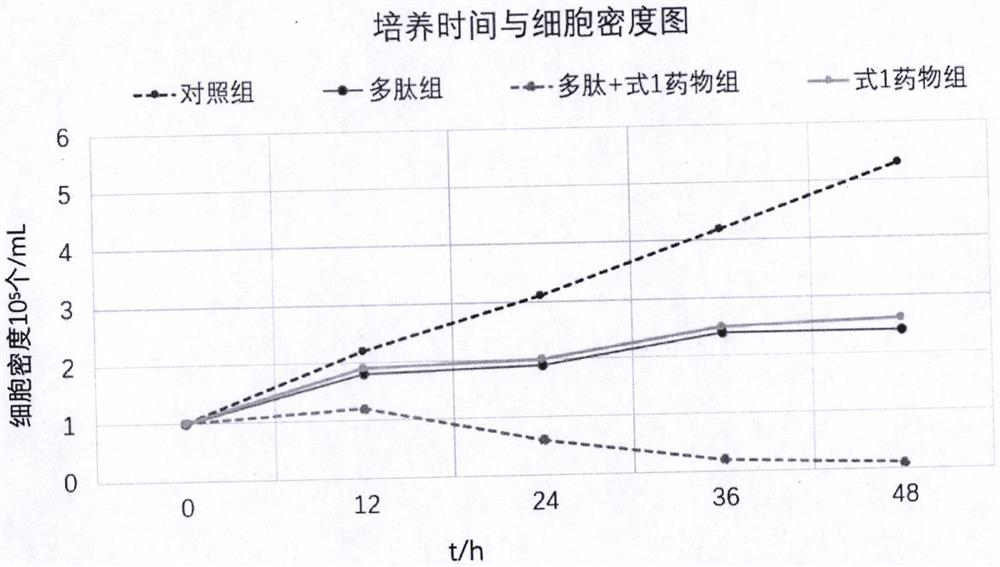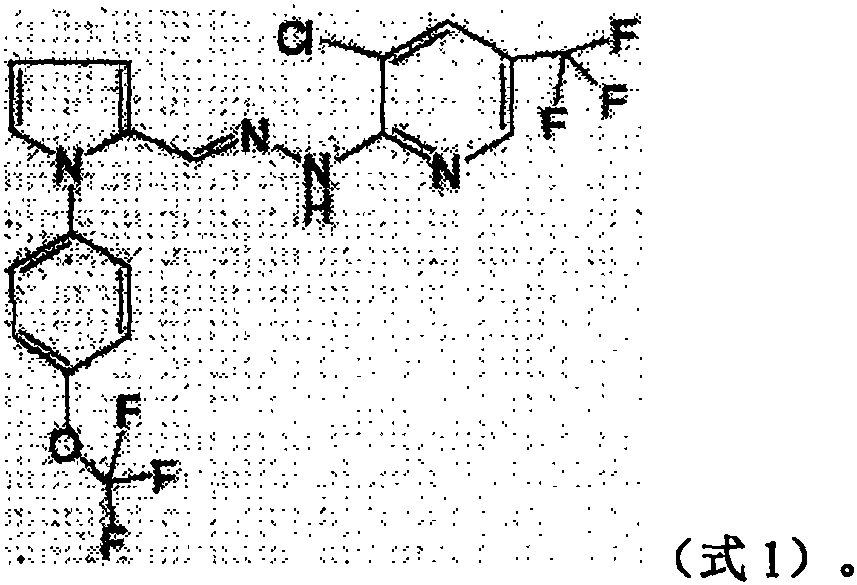a drug for treating leukemia
A technology for leukemia and leukemia cells, which can be used in drug combinations, antineoplastic drugs, and pharmaceutical formulations. It can solve the problems of strong toxicity of compounds, achieve low toxicity in normal cells, have good application prospects, and improve membrane permeability.
- Summary
- Abstract
- Description
- Claims
- Application Information
AI Technical Summary
Problems solved by technology
Method used
Image
Examples
Embodiment 1
[0033] Example 1 Cell culture and preparation of polypeptide
[0034] Tumor cell line: K562 leukemia cells (preserved by Hematology Laboratory of Shaanxi Provincial People's Hospital). After recovering from liquid nitrogen, K562 cells were placed in RPMI-1640 culture medium containing 10% inactivated fresh calf serum at 37°C. Volume fraction is 5% CO 2 , cultivate under saturated humidity conditions, keep the cell viability > 97%, and take the K562 cells in the exponential growth phase (1×10 5 cells / ml) were divided into control group and experimental group.
[0035] The polypeptide of SEQ ID NO: 1 is obtained by synthetic method, which is completed by Beijing Yiqiao Shenzhou Technology Co., Ltd.
Embodiment 2
[0036] Embodiment 2. Lactate deaminase (LDH) release test of cell membrane permeability test
[0037] Take 5X10 3 K562 cells were added to a 96-well plate at a density of 1 cell / well. The polypeptide (SEQ ID NO: 1 at pH 7.5) was incubated with the cells for 2 hours. LDH concentration (LDHsample) was measured with a chromogenic LDH kit. Triton-X100 (0.2% final concentration) was added to some wells to prepare cell lysates. The LDH concentration in the cell lysate was defined as LDHtotal. The release of LDH (LDHrelease) is calculated according to the following formula:
[0038] LDHrelease=100%X(LDHsample / LDHtotal)
[0039] The cell viability experiment was done on the same cells after the supernatant was taken out for the LDH release experiment. The cell viability and LDH release values are listed in Table 1. It can be seen from Table 1 that after the cells were treated with the polypeptide, the release of LDH increased with the increase of the concentration of the poly...
Embodiment 3
[0043] Example 3 Cell Proliferation Inhibition Experiment
[0044] Cell proliferation inhibition experiment: K562 cells in the logarithmic growth phase were added to 24-well plates at 1×105 / mL, 1 μL per well, and the drugs were 80 μM polypeptide group, 80 μM polypeptide+20 μM formula 1 compound drug group, 20 μM formula 1 The compound drug group and the PBS blank control group were counted after 12, 24, 36, and 48 hours, and the living cells were counted by the trypan blue exclusion test. The experiment was repeated 3 times, and the average value was taken to draw the growth curve. See figure 1 shown.
[0045] From figure 1 It can be seen that the inhibitory effect of the polypeptide and the compound of formula 1 on the cells is similar, and both have a certain effect, and the combination of the polypeptide and the compound of formula 1 can significantly inhibit the proliferation of cells and promote the apoptosis of cells. The cell survival rate is less than 1%, and the cel...
PUM
 Login to View More
Login to View More Abstract
Description
Claims
Application Information
 Login to View More
Login to View More - R&D
- Intellectual Property
- Life Sciences
- Materials
- Tech Scout
- Unparalleled Data Quality
- Higher Quality Content
- 60% Fewer Hallucinations
Browse by: Latest US Patents, China's latest patents, Technical Efficacy Thesaurus, Application Domain, Technology Topic, Popular Technical Reports.
© 2025 PatSnap. All rights reserved.Legal|Privacy policy|Modern Slavery Act Transparency Statement|Sitemap|About US| Contact US: help@patsnap.com



